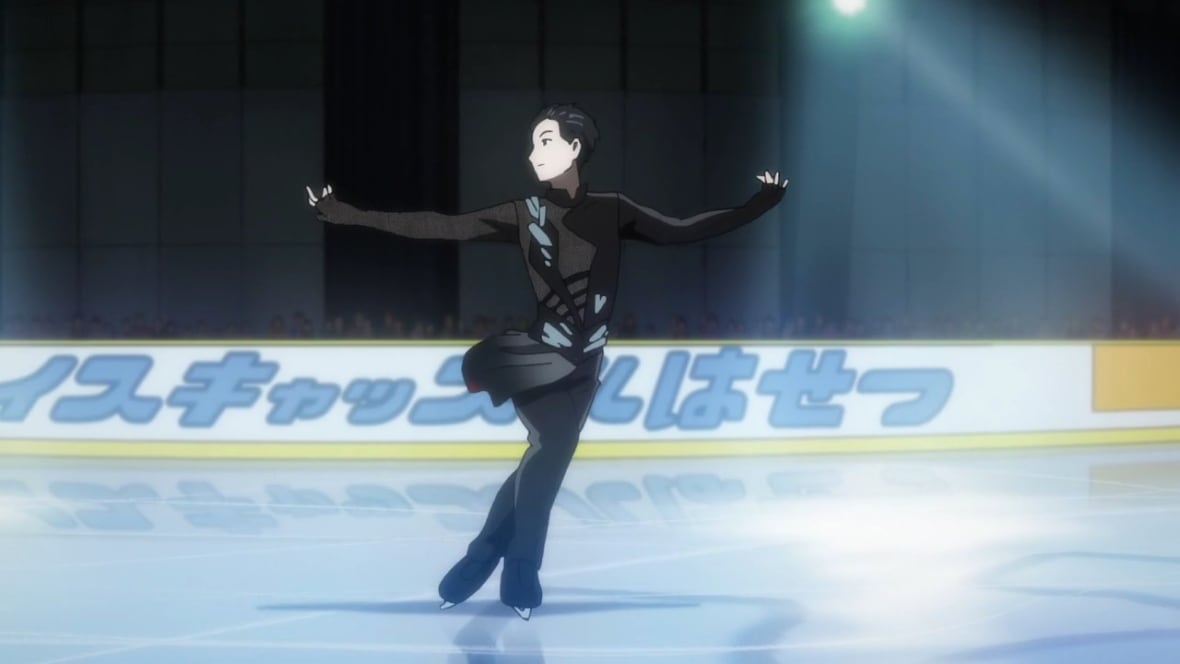An anime series about competitive figure skating made me believe in queer joy
Parul Kanwar writes about how Yuri On Ice changed something fundamental within them

Emerging Queer Voices is a monthly LGBTQ arts and culture column that features different up-and-coming LGBTQ writers. You can read more about the series and find all published editions here.
The first time I watched Yuri on Ice, I was sitting in my small apartment, thousands of kilometres from my hometown. I recall hitting play with casual curiosity. Just another show to fill time, I thought. I had no way of knowing that those 23 minutes would change something fundamental about me.
The beginning
As a non-binary bisexual person growing up in India, I grappled with the reality of being myself in worlds that hardly even recognized that I existed. The few queer stories I found — in infrequent books, while scouring the internet for fan fiction late at night — almost always ended in heartbreak, rejection or death. These stories taught me that suffering was the necessary cost of authenticity.
Yuri on Ice is an anime series about competitive figure skating, which centres around Yuri Katsuki, a talented but anxious Japanese skater who has hit rock bottom after a crushing defeat at the Grand Prix Finals. But his idol, Victor Nikiforov — a charismatic five-time world champion from Russia — sees a viral video of Yuri perfectly replicating one of Victor's routines, and it's not long before Victor unexpectedly arrives at Yuri's family's hot-spring resort to become his coach.
The 12-episode series takes place across an international skating season, as Yuri attempts to rebuild his confidence and career with Victor's guidance. The show gained popularity for its detailed animation of skating sequences and authentic portrayal of the competitive figure-skating world.
When Victor first appeared on screen, I prepared for a familiar pattern: meaningful glances never acknowledged, tension never released or a connection tragically severed.
What I got instead was revolutionary. Episode after episode, Victor and Yuri's relationship grew — not through coded gestures and plausible deniability, but through genuine emotional intimacy. When they exchanged rings toward the end of the series, I paused the video to wipe away tears. I needed a moment to process what I was witnessing: a promise of forever between two men, framed not as a punchline, but as a natural milestone in their journey together.
Mirrors in the most unlikely places
What struck me most was how Yuri and Victor's story played out in the world of competitive figure skating, with its rigid gender roles. Having had to negotiate spaces defined by similarly strict gender norms in India, I understood the uneasy balance it took to thrive in these spheres.
I remembered how every style, linguistic and social choice, every topic of discourse, every friendship, was part of a complicated calculus of authenticity versus safety.
I noted the same survival strategies in Yuri. His anxiety, his careful way of moving through life, his simultaneous yearning for connection and terror of being vulnerable — these weren't just character traits, but also coping mechanisms that felt all too familiar. Seeing him with Victor, making space for his entire self, reminded me of my own journey.
Between worlds
The cross-cultural relationship between Yuri and Victor struck another chord. In one scene, Victor tries to comfort Yuri before a competition, but only makes Yuri cry because he misreads cultural cues. That moment encapsulated countless experiences in my own life — the confusion, miscommunication and unintended pain of mixed-race connections.
As both characters learn, bridging cultures requires patience, clear communication and willingness to be vulnerable amid the confusion. The series captured this process with a nuance that echoed my lived experience of feeling out of place.
Finding myself in the in-between
I've come to view my identity as a mirror ball, reflecting many facets at once and formed by shards that don't always align perfectly. I live in liminal spaces between traditional categories, belonging partially to many places, but fully to none.
Yuri on Ice articulated this existence with incredible clarity. The series itself defies categorization. It's not quite sports anime and not quite romance. Victor and Yuri's relationship crystallizes on the road — in hotel rooms, at airports, at foreign competitions — mirroring how many queer people, especially those with multiple marginalized identities, construct their homes in the in-between.

In the final episode, Yuri performs a routine that integrates everything he's learned about himself, mixing what he has drawn from his cultural background with lessons from his relationship with Victor. Like Yuri, I too am the product of my culture, my gender expression and my professional and personal selves — not through compartmentalization but through integration.
Small shifts on sleep-deprived nights
One night, a week or so after I finished the series for the first time, I couldn't sleep, and I rewatched the Cup of China episode in which Yuri overcomes the pressure of being in first place after the short program and performs well in his free skate. Victor, caught up in his emotions, kisses him live on international television. I remember replaying that scene at least five times, the blue glow from the screen bright in an otherwise dim room.
By the fourth playback, I understood that I was having an experience I couldn't name on the spot because it was so unfamiliar. I was watching someone like me being loved openly, without shame or death. It was after midnight, and the realm outside my window was silent. But inside, I experienced a deep shift in what I felt was possible for me.
If Victor could kiss Yuri while the world looked on, perhaps I could stop shrinking my identity for someone else's comfort. If their love could be celebrated instead of punished, maybe mine deserved to be honoured too. These were simple ideas, but for a person who was brought up on stories where queerness always comes at a price, they felt revolutionary.
From surviving to thriving
Before Yuri on Ice, engaging with queer media felt like harm reduction — noting the least tragic options, celebrating the slimmest slivers of representation. The bar was so low that vague subtext seemed like a win.
The success of the series demonstrated what many knew, but the industry hadn't conceded: that viewers wanted stories about queer love that didn't inevitably end in suffering. We're not a niche market that will be content with occasional tokens; we're viewers with a passionate investment in seeing ourselves not just surviving, but flourishing.
Yuri on Ice opened doors for anime like Given and Bloom Into You, which approach queer relationships with similar nuance. Even Western animation has evolved from coded to explicit queer representation, as in She-Ra and The Owl House.
Personal revolution
Years later, what remains most powerful for me is how the series reshaped what I believe to be possible, on screen and in my life. It helped me envision a future where complex identities aren't barriers to connection, but pathways to deeper understanding. It taught me that stories about people like me don't have to end in tragedy, that breaking boundaries related to gender, sexuality and culture can lead not just to survival, but to joy too.
Whenever I rewatch Victor and Yuri performing together in perfect harmony despite their differences, I reflect on the future I'm creating — one where differences can be embraced as the foundation of our relationships.
Yuri on Ice matters because it dared to imagine that future first. And in doing so, it helped me imagine it for myself.



